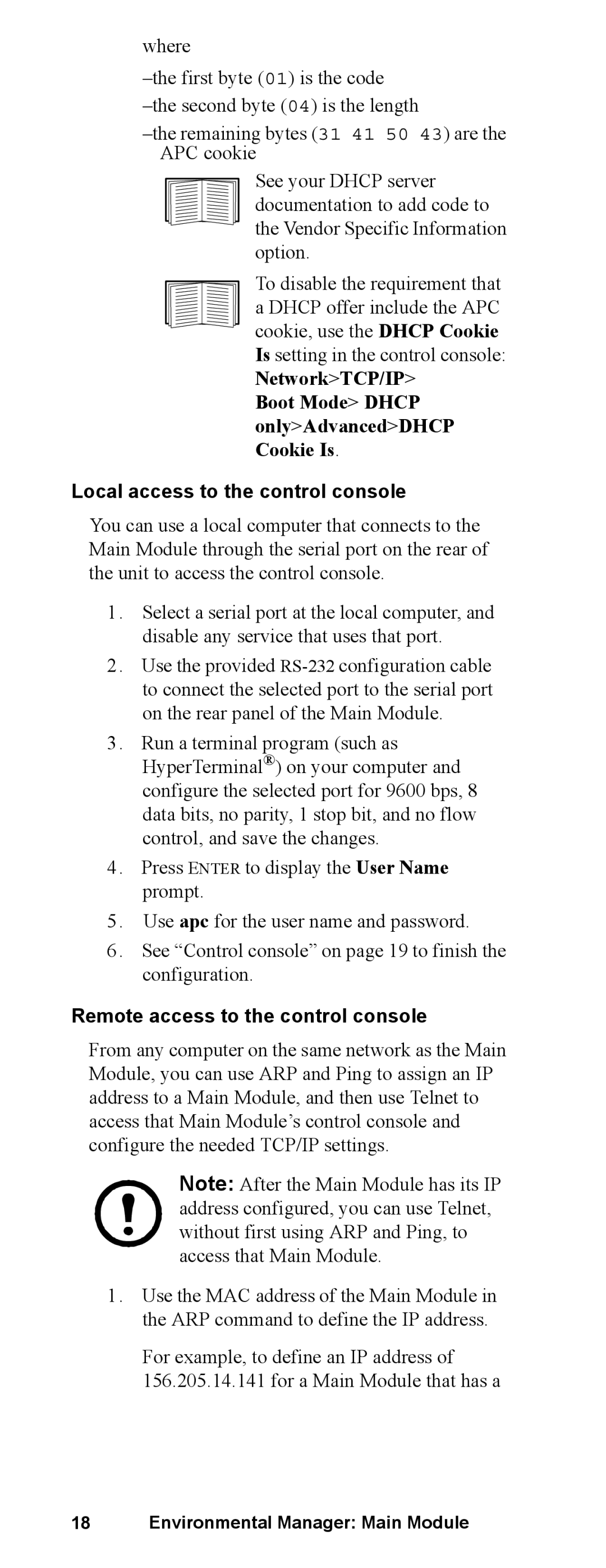
where
See your DHCP server documentation to add code to the Vendor Specific Information option.
To disable the requirement that a DHCP offer include the APC cookie, use the DHCP Cookie Is setting in the control console: Network>TCP/IP>
Boot Mode> DHCP only>Advanced>DHCP Cookie Is.
Local access to the control console
You can use a local computer that connects to the Main Module through the serial port on the rear of the unit to access the control console.
1 . Select a serial port at the local computer, and disable any service that uses that port.
2 . Use the provided
3 . Run a terminal program (such as HyperTerminal®) on your computer and configure the selected port for 9600 bps, 8 data bits, no parity, 1 stop bit, and no flow control, and save the changes.
4 . Press ENTER to display the User Name prompt.
5 . Use apc for the user name and password.
6 . See “Control console” on page 19 to finish the configuration.
Remote access to the control console
From any computer on the same network as the Main Module, you can use ARP and Ping to assign an IP address to a Main Module, and then use Telnet to access that Main Module’s control console and configure the needed TCP/IP settings.
Note: After the Main Module has its IP address configured, you can use Telnet, without first using ARP and Ping, to access that Main Module.
1 . Use the MAC address of the Main Module in the ARP command to define the IP address.
For example, to define an IP address of 156.205.14.141 for a Main Module that has a
18 Environmental Manager: Main Module
